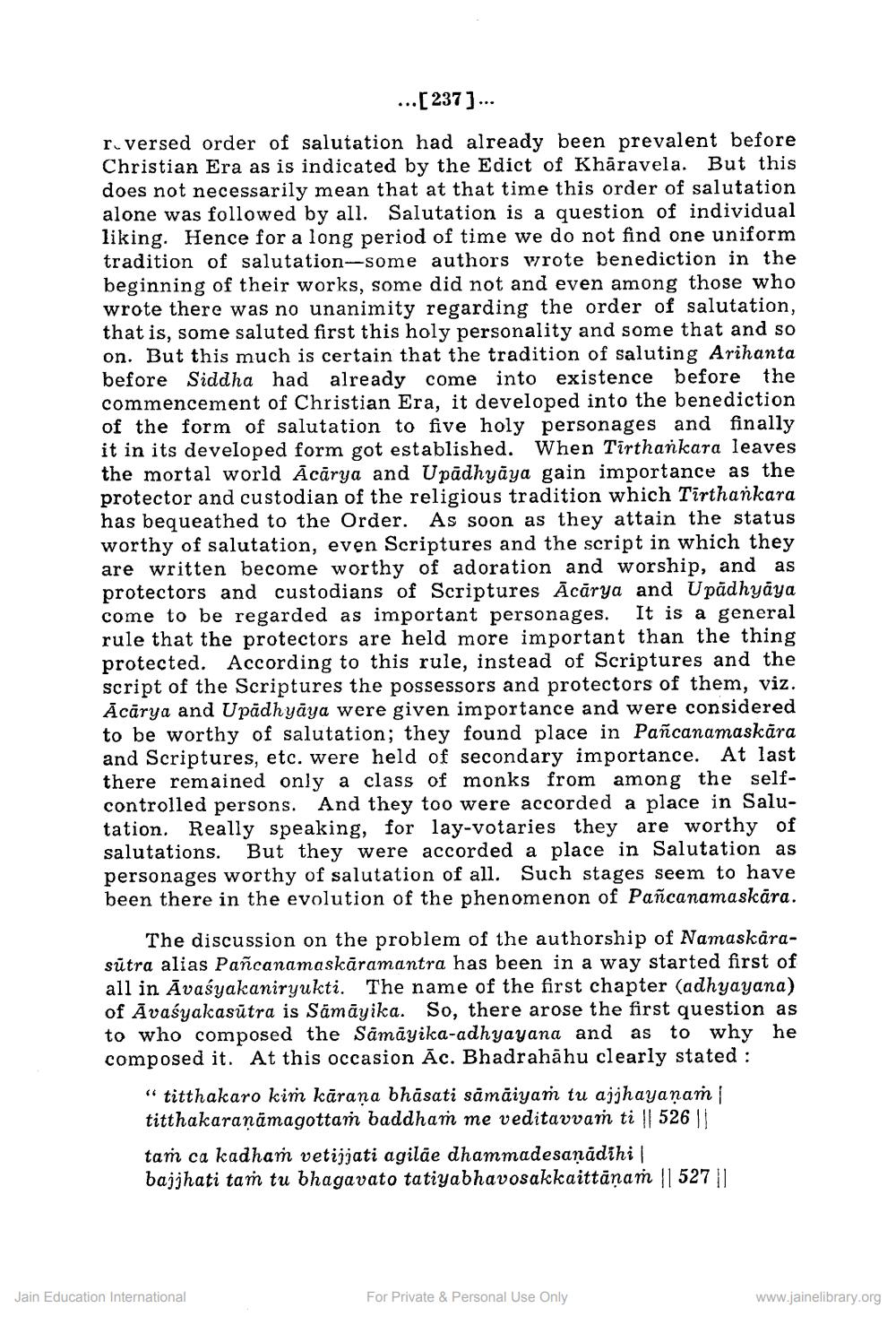________________
...[237] ...
r.versed order of salutation had already been prevalent before Christian Era as is indicated by the Edict of Khāravela. But this does not necessarily mean that at that time this order of salutation alone was followed by all. Salutation is a question of individual liking. Hence for a long period of time we do not find one uniform tradition of salutation-some authors wrote benediction in the beginning of their works, some did not and even among those who wrote there was no unanimity regarding the order of salutation, that is, some saluted first this holy personality and some that and so on. But this much is certain that the tradition of saluting Arihanta before Siddha had already come into existence before the commencement of Christian Era, it developed into the benediction of the form of salutation to five holy personages and finally it in its developed form got established. When Tirthankara leaves the mortal world Ācārya and Upadhyāya gain importance as the protector and custodian of the religious tradition which Tirthankara has bequeathed to the Order. As soon as they attain the status worthy of salutation, even Scriptures and the script in which they are written become worthy of adoration and worship, and as protectors and custodians of Scriptures Ācārya and Upadhyāya come to be regarded as important personages. It is a general rule that the protectors are held more important than the thing protected. According to this rule, instead of Scriptures and the script of the Scriptures the possessors and protectors of them, viz. Ācārya and Upadhyāya were given importance and were considered to be worthy of salutation; they found place in Pañcanamaskara and Scriptures, etc. were held of secondary importance. At last there remained only a class of monks from among the selfcontrolled persons. And they too were accorded a place in Salutation. Really speaking, for lay-votaries they are worthy of salutations. But they were accorded a place in Salutation as personages worthy of salutation of all. Such stages seem to have been there in the evolution of the phenomenon of Pañcanamaskara.
The discussion on the problem of the authorship of Namaskarasūtra alias Pañcanamaskāramantra has been in a way started first of all in Āvaśyakaniryukti. The name of the first chapter (adhyayana) of Āvaśyakasūtra is Sámāyika. So, there arose the first question as to who composed the Sāmāyika-adhyayana and as to why he composed it. At this occasion Āc. Bhadrahāhu clearly stated :
“ titthakaro kim karana bhāsati sämäiyam tu ajjhayanam titthakaraņāmagottam baddha me veditavvañ ti | 526 tam ca kadhaṁ vetijjati agilāe dhammadesanádihi bajjhati tam tu bhagavato tatiyabhavosakkaittäņam || 527 ||
Jain Education International
For Private & Personal Use Only
www.jainelibrary.org




